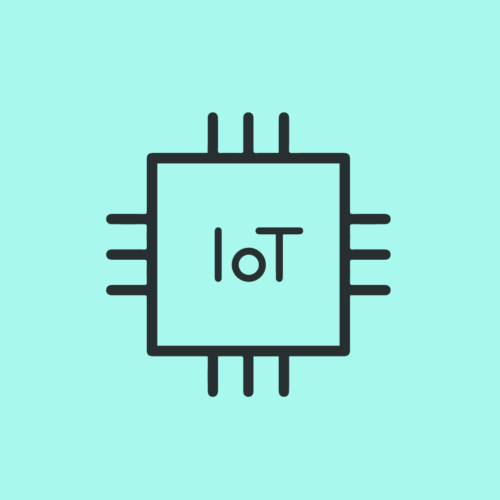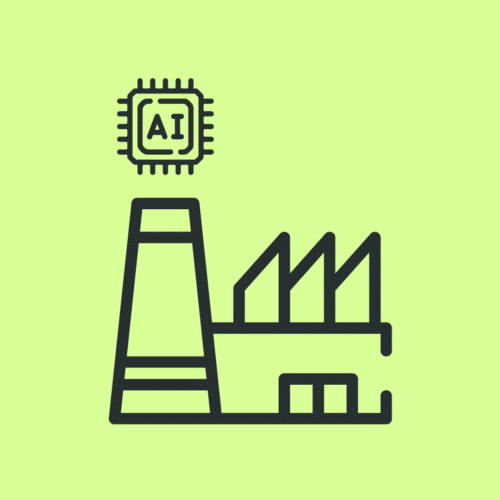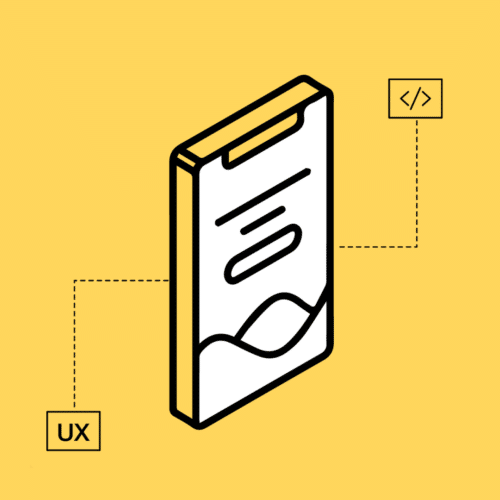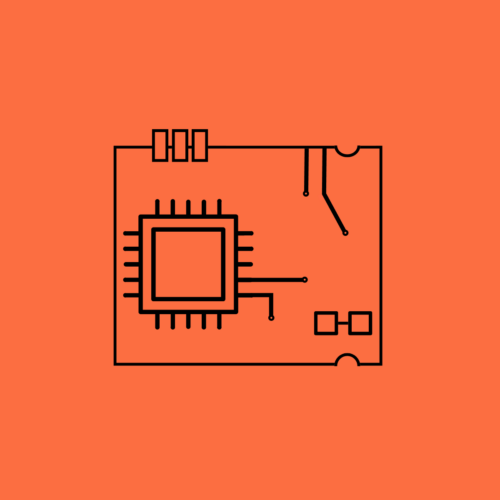BLOG
Data Science and Machine Learning in IoT: FAQs
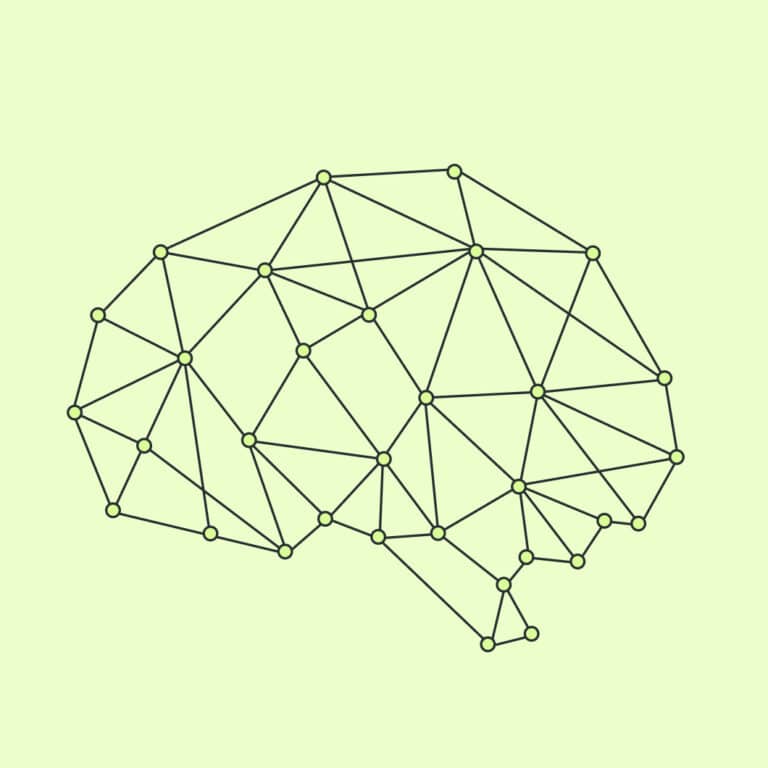
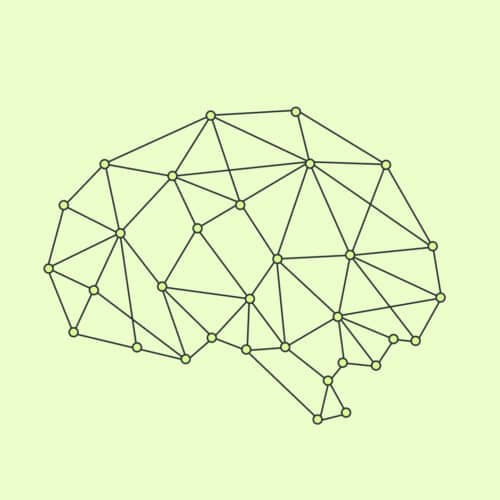
If you’re starting to venture into the world of IoT, you’ve probably heard the terms “data science” and “machine learning” thrown around pretty frequently by now. (And if you haven’t yet, be prepared to.)
Data science and machine learning are intricately intertwined, but — as we’ll discover in this article — they’re not interchangeable. And as anyone who’s built a smart IoT product knows, data science and machine learning are crucial components to the development of innovative, intelligent products.
In order to understand the important roles data science and machine learning play in IoT, we’ll dissect each practice and discover how they operate, both on their own and together. Here are some of the most common questions about data science and machine learning answered.
What is data science, and why is it important for businesses and IoT projects?
In simplest terms, data science is the practice of generating actionable insights from raw business data. Those insights empower businesses to do things like boost revenue, reduce costs, uncover opportunities, and enhance customer experiences. Data science is vital for IoT projects, offering the tools and techniques to turn raw data into valuable intelligence that has the power to refine business processes, optimize operations, and generate new revenue streams.
There are several ways data science can drive business results, such as:
- Streamlining operations: IoT data helps monitor equipment, facilities, and processes. Data scientists can build models that spot patterns and trends to reveal potential issues, predicting future performance and keeping things running smoothly.
- Elevating customer experiences: IoT data grants us a deeper understanding of customer behavior and preferences. Data scientists use this information to tailor experiences, refine products, and uncover new revenue streams.
- Strengthening security: IoT devices can be vulnerable to attacks from cyber criminals. Data scientists wield data analysis techniques to detect anomalies and pinpoint potential security threats.
- Discovering new business opportunities: IoT data can reveal untapped business goldmines and aid in the development of innovative products and services. You can think of data scientists as treasure hunters who, use data to unlock exciting new possibilities.
- Overcoming challenges processing data at scale: IoT projects churn out troves of data, which require prompt processing and analysis. Data scientists come to the rescue with techniques like distributed computing and cloud computing to ensure an IoT project scales up seamlessly.
Why is it essential to have staff or external partners with data science skills for IoT projects?
IoT projects generate massive amounts of complex, diverse data. All that data requires proper processing, analysis, and visualization for informed decision-making. Data scientists possess the expertise to process and analyze large datasets, extract meaningful insights, and make predictions using statistical and machine learning models. Their skills in data analysis and visualization help uncover patterns, trends, and relationships in the data, making data science crucial for successful IoT projects.
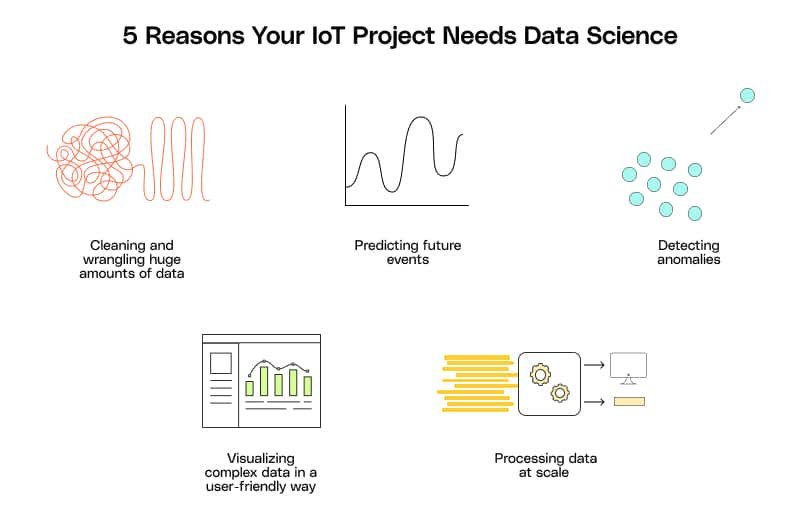
Data science skills bring valuable benefits to IoT projects, including:
- Data cleaning and wrangling: IoT projects produce heaps of data, which can be messy or incomplete. Data scientists wrangle unruly data into shape and prepare it for further analysis.
- Predictive modeling: IoT data can help us foresee future events, such as equipment breakdowns, for example. Data scientists wield machine learning algorithms to make these predictions, helping businesses stay one step ahead and avoid costly downtime.
- Anomaly detection: Data science techniques can identify anomalies in data sets, which is crucial for identifying and solving issues before they become serious.
- Visualization: A lot of the raw data that comes from IoT devices is complex and difficult to decipher. Data scientists use data visualization techniques to transform that raw data into clear pictures that are easily understood by general audiences.
- Data processing at scale: Data scientists employ techniques like distributed computing and cloud computing to scale data processing and meet project requirements.
What responsibilities do data scientists have in IoT applications?
Data scientists play a pivotal role in extracting insights and making predictions from the vast amount of IoT data they work with. Their tasks include data collection and preprocessing, exploratory data analysis, modeling and prediction, visualization, monitoring and maintenance, deployment, and collaboration across teams to design and implement IoT projects.
Can our data engineers fulfill the same responsibilities as data scientists?
It might be possible, but don’t count on it. Here’s why.
While some individuals or teams excel in both roles, data scientists and data engineers serve distinct purposes. Data scientists focus on the “what” and “why” of data, while data engineers concentrate on the “how.”
Assuming that an internal data engineering team can handle the necessary data science tasks is risky.
In IoT contexts, data engineers design and build the infrastructure for collecting, storing, processing, and transporting the massive amounts of data generated by IoT devices. Their role includes setting up scalable systems for real-time data streams, ensuring data security and privacy, and integrating with other systems.
In contrast, data scientists analyze IoT data to identify patterns, make predictions, and drive business decisions, working closely with data engineers to obtain and process necessary data.
What is machine learning, and how is it used in IoT?
Now that we’ve developed a clear understanding of the role data science plays in IoT, let’s take a look at the next component: machine learning.
Machine learning is a branch of artificial intelligence that uses data and algorithms to imitate human learning, improving accuracy over time. In IoT, machine learning analyzes data from connected devices to enable intelligent decision-making, automation, and enhanced functionality across various applications and industries.
Here are some common use cases for enhancing IoT applications with machine learning:
- Predictive maintenance: Machine learning digs into the sensor data derived from IoT devices, foreseeing equipment failures and allowing for timely repairs. It’s a game-changer for industries like manufacturing, transportation, and energy.
- Anomaly detection: Machine learning helps spot odd patterns in IoT data, aiding in detecting security breaches, fraud, or malfunctioning devices.
- Personalization and recommendations: In the context of consumer IoT, machine learning analyzes user behavior to deliver tailored experiences, like customized product suggestions and personalized fitness plans.
- Resource optimization: Machine learning crunches IoT sensor data to optimize use of resources. That can include things like energy consumption in smart buildings, as well as ensuring the smooth flow of traffic in smart cities or wiser water use in agriculture.
- NLP and voice assistants: Machine learning processes human language, empowering voice assistants like Amazon Alexa or Google Assistant to interact with IoT devices more naturally and seamlessly.
- Computer vision: Techniques like deep learning allow machine learning to process and analyze IoT camera images or videos, enabling facial recognition, object detection, and traffic monitoring in smart cities.
- Edge computing: Machine learning models can run on edge devices — IoT devices with local processing power — reducing latency, enhancing privacy, and cutting bandwidth usage.
- Autonomous systems: Machine learning, especially reinforcement and deep learning, is vital for autonomous IoT systems like self-driving cars, drones, and robots, enabling real-time decision-making, navigation, and interaction with their environments.
Do all connected products/IoT projects require machine learning?
Not all IoT applications need machine learning; in some cases, simple rule-based logic or deterministic algorithms will suffice. However, if a connected product requires complex data analysis — or needs to be able to make predictions and adapt to changing conditions — incorporating machine learning is likely necessary to achieve the desired level of performance and intelligence.
Ultimately, the decision to include machine learning in a connected product should be based on the product’s goals, the complexity of the problem it aims to solve, and the value that machine learning can bring to the end users.
How important are data science and machine learning to the overall outcome of an IoT project?
Both are crucial. Machine learning often drives the core purpose and functionality of the product, enabling intelligent decisions and automating processes. Data science on the other hand, builds the foundation machine learning relies upon. From the very beginning of an IoT project, data scientists are considering the data lifecycle that underlies every aspect of the product, from hardware to firmware and software, in order to collect quality data to feed the machine learning algorithms.
Driving innovation: The power of data science and machine learning
Ultimately, data science is integral to the success of IoT projects — and machine learning is what pushes the envelope for IoT innovation. While data science builds a solid foundation for machine learning capabilities, machine learning techniques can be used to build predictive models, identify anomalies, optimize processes, and enable autonomous decision-making that propel IoT applications to new heights.



